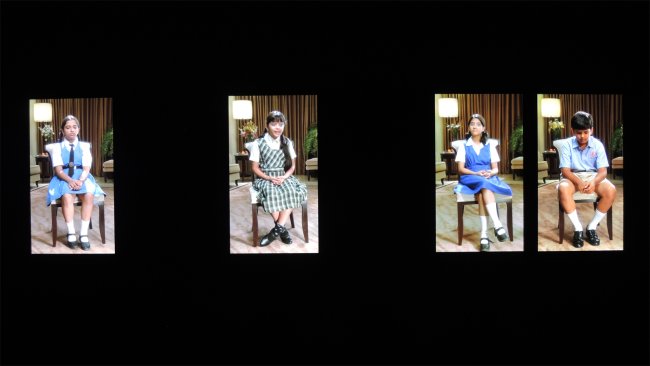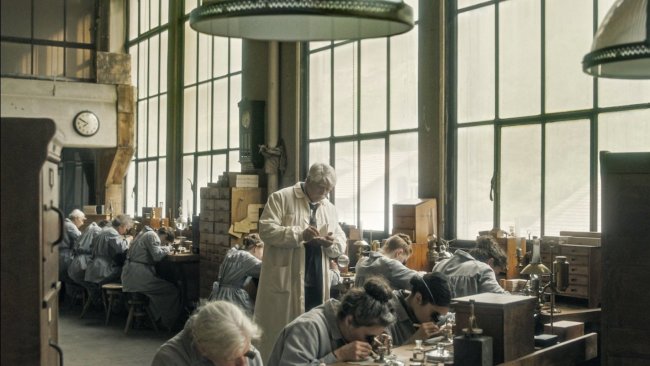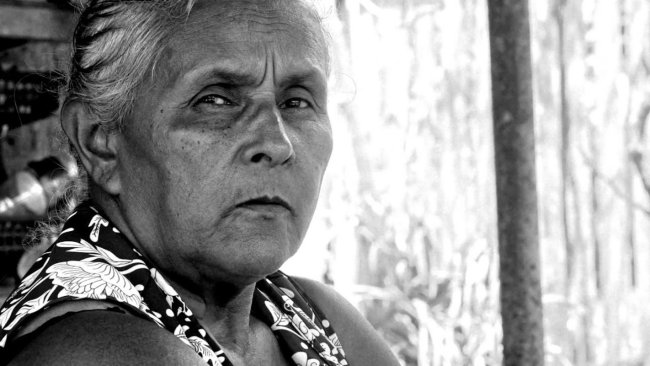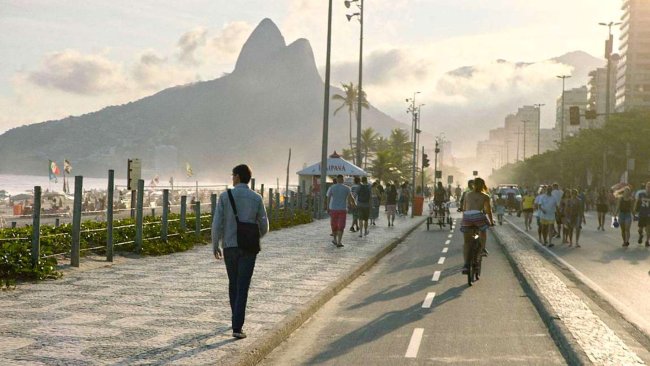Rojo
[…] «Rojo» is a mix of black comedy, thriller, melodrama, crime fiction, musical and western, but above all is a political film that shows how, in order to stay alive under a regime that implements control through violence and fear, most of the population decide not to see.
[…] Though the story is linear, Naishtat´s decision to tell it by tightly edited tableaux widens the range of the narrative. Step by step, we can sense off-screen the impending arrival of a new regime and its approaching fsog of fear, and we cannot avoid recalling what an officer said to a driver when asked about the destiny of the truck full of corpses he was carrying on: “to nowhere mist”.
Text: Jorge Yglesias
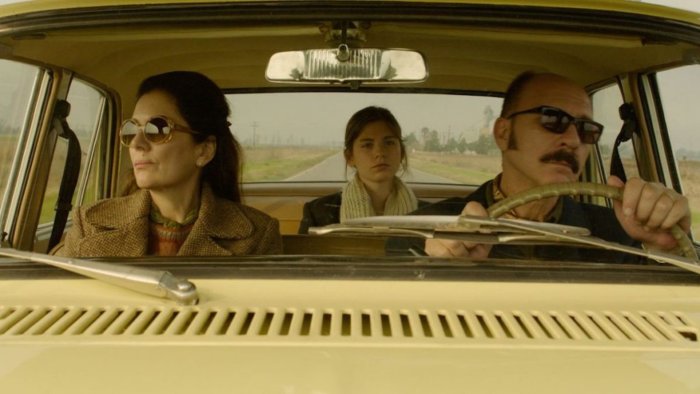
At the start of Benjamin Naishtat´s Rojo, Claudio (a well-mannered lawyer) and a quarrelsome stranger (that soon will be identified as “the Hippie”) have a verbal duel in a restaurant. After this incident the unknown man shoots himself in the street before Claudio and his wife. As “the Hippie” is still alive, the lawyer’s first reaction is to go for medical help, but in the end, he abandons the dying man in the desert. Months later, his moral cowardice will be put in the spotlight with the arrival of a famous detective.
Set in a provincial Argentinian town in 1975, on the verge of the coup d´état that led to the bloodiest dictatorship in the history of the country and the death (“disappearance”) of thousands of people, Rojo is a mix of black comedy, thriller, melodrama, crime fiction, musical and western, but above all is a political film that shows how, in order to stay alive under a regime that implements control through violence and fear, most of the population decide not to see. However, to attribute to Argentinian middle class the responsibility of the rise of this state of terror, as some critics have done, would mean forgetting that many people living under such a circumstance collaborate (willingly or not) with their silence, simply to avoid becoming a victim. The past is a kingdom that only exists in the present, a changing present that cannot demand the past to be more than it was.
Using zoom and Panavision lens of the 70´s, Brazilian cinematographer Pedro Sotero tries to reproduce the style of the films of this decade. Fades and slow motion also contribute to give Rojo the look of a movie made in the days previous to the coup. Though the story is linear, Naishtat´s decision to tell it by tightly edited tableaux widens the range of the narrative. Step by step, we can sense off-screen the impending arrival of a new regime and its approaching fog of fear, and we cannot avoid recalling what an officer said to a driver when asked about the destiny of the truck full of corpses he was carrying on: “to nowhere mist”. On the other side of this insubstantial wall there was a kidnapped nation.
Rojo deals with different variations (symbolic in some cases) on the subject of “missing”: the house of the first shot of the movie, ransacked by its neighbours; the disappearance of “the Hippie”, still alive, on the desert; the nonviolent abduction of a teenager, as revenge of the jealous boyfriend of Claudio´s daughter; the sudden departure of a friend of Claudio, who probably (or not) went to exile; the vanishing of a young woman by a magician. The colour strategy is also a set of variations on red, a symbol of communism and blood, that becomes more intense as time goes by, culminating in the nightmarish eclipse´s scene and the magician´s show.
The substance of Rojo, the space where the film is more eloquent, is not in the personal story of Claudio and the Hippie´s death, but in those moments where others characters and extravagant events illustrate the disturbing atmosphere of this epoch through uncanny acts and phrases, as the TV ad of chocolate candies “Only for egoists”, or the banal conversation with an old lady in the garden of the vacant and pillaged house of desaparecidos that we saw in the first shot, the camera always high up. Or as a wicked intertextuality, Sinclair, the Cartesian Chilean detective incarnated by Alfredo Castro, his dated overacting representing the rhetoric of a “Law and Church” establishment, and proclaiming Christian and patriotic statements with a declamatory voice. The first time that we see Sinclair, he is out of focus, an apparition at the back of Claudio, as if he were emerging from Pablo Larraín´s Tony Manero.
No less evil-minded is the character of the professor, her face always showing a perverse politeness, such as when in a scene of pedagogical ambiguity that reminds us of the corrosive Lucrecia Martel: she teaches a student the meaning of the word “intention” with a disquieting erotic method. She embodies a cynical power, training the students to stage The Savages, the fourth entrée of Jean-Philippe Rameau´s Les Indes galantes, an opera-ballet that displays the lack of concern for realism in the 18th century notion of the “exotic”, a geographical and ethnographic potpourri inhabited by princes and princesses of various continents and countries whose four tableaux summarise the variety of musical dramaturgy: drama, tragedy, pastoral, and comedy.
In some way, Rojo is an opera-ballet itself, familiar to heterogeneity and the mixing of genres, a fragmented vision of a society forced into silence and complicity due to fear. At the end, the professor´s chauvinistic discourse introducing Rameau´s piece confirms the values of those that only want “to work and live in peace”, as the lawyer said to Sinclair in the middle of the film. Rojo concludes with a zoom on Claudio (now wearing a wig) integrated in a “closed crowd” (to quote Elias Canetti´s term) of good citizens fascinated by a representation of Les Indes Galantes, eager to survive becoming deaf, dumb and blind.
This article contains a third-party video. If you would like to watch the video, please adjust your settings.
Watch
ONLINE STREAMING (Switzerland) on Filmexplorer’s Choice by filmingo.ch
Info
Rojo | Film | Benjamin Naishtat | ARG-BRA-FR-NL 2018 | 109’
Best Direction, Best Camera, Best Actor at San Sebastian International Film Festival 2018
First published: August 24, 2019
